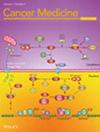Prognostic Implications of the Number of Lymph Node Metastases in Oral Tongue Squamous Cell Carcinoma: A Population Study of the SEER Database and an Institutional Registry
Abstract
Background
To investigate the impact of the number of positive lymph nodes (PLNs) on long-term survival and pathological nodal stage in patients with oral tongue squamous cell carcinoma (OTSCC).
Materials and Methods
Newly diagnosed and nonmetastatic adult patients with OTSCC who underwent curative resection were identified between January 2010 and December 2020. External validation was performed via the SEER registry. Multivariate Cox proportional hazards model was employed to calculate hazard ratios (HRs) and 95% confidence intervals (CIs) of pathological nodal features. Propensity score matching (PSM) was used to assess effect of adjuvant chemoradiotherapy (ACRT).
Results
Among 518 curative-intent OTSCC patients, the number of PLNs independently predicted overall survival (OS), surpassing other pathological nodal features, including extranodal extension, laterality, and lower neck involvement. Patients with 1 or 2 PLNs had comparable worse OS than those with no PLN (median OS of 1 PLN vs. 2 PLNs vs. 0 PLN: 35.1 vs. 30.5 vs. 40.2 months), but better than those with ≥ 3 PLNs (median OS of 1–2 PLNs vs. 3 PLNs: 32.1 vs. 19.0 months). A proposed nodal category with 0, 1–2 PLNs, and ≥ 3 PLNs exhibited increasingly worse OS (HR of 1–2 PLNs and ≥ 3 PLNs vs. 0 PLN: 2.98 [95% CI: 1.89–4.71], p < 0.001; 5.47 [95% CI: 3.33–9], p < 0.001; respectively) and showed improved prediction power versus current pN staging (C-index: 0.717 vs. 0.713, p < 0.001). PSM analysis revealed that ACRT benefited patients with advanced nodal disease (≥ 3 PLNs) and improved OS. These findings were validated in SEER registry.
Conclusion
The number of PLNs is a better predictor of overall tumor burden for OTSCC and could be a more accurate metric for survival estimation, which should be considered in future simplified pathological nodal staging for better risk stratification and decision-making in subsites of the oral cavity.


 求助内容:
求助内容: 应助结果提醒方式:
应助结果提醒方式:


